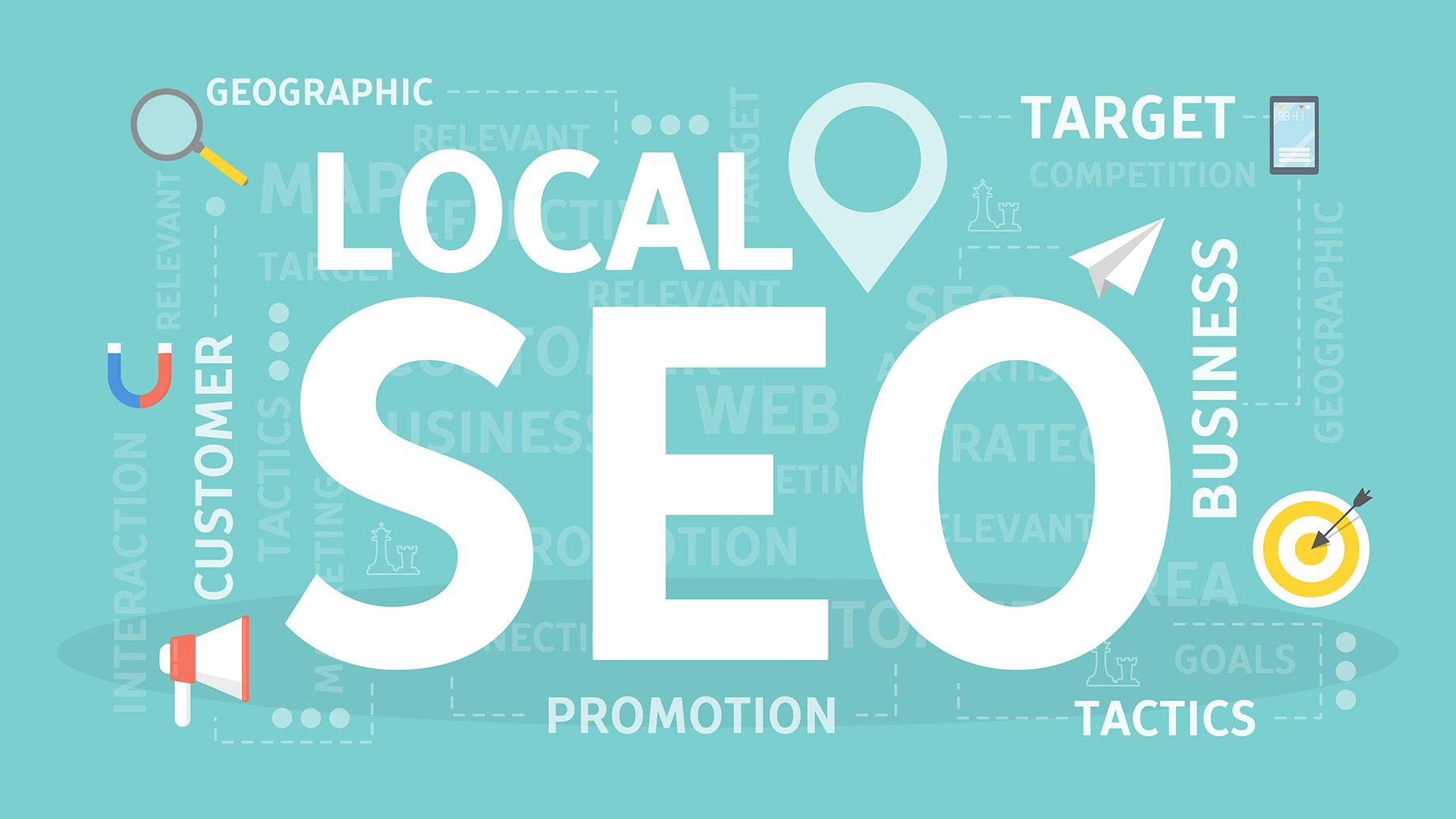Guest Post
How to Increase Awareness and Generate Leads with Local SEO
The rise of Local SEO has made it easier for businesses to increase brand awareness and generate leads through search engines like Google, Yahoo, and Bing. Unlike conventional searches, local ones include a “where” component such as an address or city. Search engines are now prioritizing local businesses in these searches, providing opportunities for those businesses to reach a larger audience. Plus, investing in local search rankings doesn’t require a large financial investment, making it a cost-effective marketing tool. The Google Places feature is the primary tool for local search marketing on the web and is largely free. Bing and Yahoo also offer local business listings. Business websites should be optimized for geo-targeted keywords.

Introduction
Your business has powerful partners that are working hard to help you increase brand awareness and generate new leads. Are you taking advantage of Google, Yahoo, and Bing’s new focus on Local SEO?
What is Local vs. Conventional Search?
Local search queries differ from conventional searches in that you are adding a “where” component, such as an address, a city, or a zipcode, to the “what” component (keyword, product, service, etc) that you are looking for. For years, these searches have often been dominated by national competitors: large directory sites with thousands of pages and other non-local SEO powerhouses. Now, the game has changed, and search engines want to feature your local business, your products, and your services.

Those companies without a local presence are finding it harder and harder to compete for these valuable search queries – searches that are increasingly being performed from smartphones and other mobile devices by consumers who are immediately looking to make a purchase.
Why the focus on Local SEO?
Consumers have always been in need of local products and services. What’s changed is their behavior and the tools they use to perform local searches. Traditionally, local directories like the Yellow Pages, along with newspapers and local magazines, supplied this information, but the digital age has changed all that. Computers and search engines have replaced the Yellow Pages and increasingly, smartphones and other mobile devices are your computers. When was the last time you picked up a copy of the Yellow Pages to order food or look for a local service or product?
What’s currently happening online is that many sites are battling the search engines for your local attention. While Google is still dominant (and has been since rolling out Google Maps in 2004), the landscape has changed: in addition to Yahoo! and Bing, many new local options like FourSquare, Yelp, Merchant Circle, and Urban Spoon are giving consumers what they want – reviews and feedback on local merchants and their services or products.
All of this focus on local search means that now is the perfect time to roll out a local SEO strategy and grow your business.
Cost a Concern? Local SEO is Budget Friendly
It is possible to achieve great local search rankings without a large SEO investment – as long as you are willing to invest the time. Local business listings, when optimized, can quickly achieve first-page exposure and will outperform expensive, traditional advertising.
Study after study illustrates that organic search traffic converts at a higher rate than most other marketing channels. Consumers are actively seeking you out – this makes search marketing much more effective than traditional “interruption” marketing.
The Great Equalizer
Google’s focus on local businesses has resulted in a dramatic change in search results compared to the past. Geo-targeted searches return Google Maps listings that level the playing field for small businesses that have one huge edge over national competitors: a local address.
 Without that all-important street address, it makes little difference how much money these companies throw at SEO. You can rank well and get in front of potential customers when and where they are shopping. This makes local search one of your most powerful tools for building brand awareness and establishing credibility and authority.
Without that all-important street address, it makes little difference how much money these companies throw at SEO. You can rank well and get in front of potential customers when and where they are shopping. This makes local search one of your most powerful tools for building brand awareness and establishing credibility and authority.
There’s an App for That – Local and Mobile
Whether you’re an iPhone, Droid, or Blackberry user, one thing is clear– the user experience on mobile puts everything at your fingertips. Apps that tie into Google Maps or other local listings will often eliminate search listings altogether and only pull from these niche listings. Your business details, reviews, and driving directions are at your customers’ fingertips, and the only way you miss out is if you aren’t listed locally.
Local Search and Google
Google Local Success Starts with Google Places
Google Places is the #1 place for local search marketing on the Web, and it’s largely free. Google Places gives your business visibility to potential customers even if you don’t have a website. More than likely, you have seen Google Places listings recently when you have searched for services or products in a specific city. People performing these types of searchers are HOT buyers and they want to buy locally. Google realized this and has slowly transitioned Google Places into a powerful tool for local search.
Keep in Mind that Google Places is not a Directory
Google Places displays listings as ranked by a mathematical formula (algorithm). So, your business may not always appear on the same keyword search in the same order or even in the same category day-to-day. Google states that:
-
“Changes are automated and impartial.”
-
“Having a correct, comprehensive, and up-to-date listing is the most effective way to ensure the best possible ranking.”
-
“Google Maps ranks business listings based on their relevance to the search terms entered, along with geographic distance (where indicated) and other factors. Sometimes our search technology decides that a business that’s farther away from your location is more likely to have what you’re looking for than a business that’s closer.”
-
“Google Maps and Google Places are a free service, so there’s no way to request or pay for a better ranking. We also can’t provide additional details about our ranking algorithm. We do our best to keep the details of the algorithm confidential in order to make the ranking system as fair as possible for everyone.”

The Evolution of Google Places
In September 2004, Google launched its “Google Local” business listings with maps. “Google Maps,” a more extended mapping feature, was launched in April 2005, featuring “satellite view” and directions, and quickly that was merged together to form “Google Places.”
Integration with Organic Search Listings
For many years, Google Places listings have dominated local search results and you are probably very familiar with the “7-pack” search results, which display a local map and the top 7 local businesses corresponding to your keyword query. These results frustrated many companies’ local SEO efforts because they pushed companies with great organic search ranks far down page 1 (best case) and onto the second page (worst case).
Enter the “0-Pack”
November 2010 ushered in a dramatic new look and feel for many local search results, one which integrated the “7 pack” results with their corresponding organic search results.
This new look can now be found in many markets, as can the traditional 7-pack results, which don’t appear to be phasing out entirely.
What You Need to Know: The Zero-pack emphasizes the importance of optimizing both your Google Places listing as well as your organic listing – local companies with a focus on each seem to have the edge right now. Here’s a snapshot of this new look:
As you can see, Google’s new layout gives businesses significantly more exposure than the 7-pack layout. Plus, the new results take up more real estate, which further spotlights the 3-4 optimized listings that rank near the top.
So how do you ensure that top ranking? Let’s discuss that now.
Building a Powerful Google Places Listing
Listen to Google. Google provides you with concise directions on how to build your business’s places page. Before you begin, there are a few things you should understand that will help ensure that Google Places is having maximum Local SEO impact.
Consistency – Conventional SEO puts a high premium on having the proper keywords in place…for good reason. Google Places does give you plenty of opportunities to tell visitors what search terms your business relates to but you also need to ensure that your business information is consistent with the contact information (address, phone, URL, etc) found on your primary domain AND any citation sites. Google needs to be able to trust you, and when they see consistent business information across multiple sources, it helps.
Completion – Complete your Google Places listing. So many businesses go halfway and provide the bare minimum, but a thorough, complete Google Places listing will rank better and provide a stronger user experience. This means photos, videos, and coupons – Google allows you to include a lot of information, and remember: It’s ALL FREE.
Citations – To Google, citations equate to trust in the same way backlinks do. Citations are loosely defined as a link from an authoritative source or directory, review site, or local pages directory. Citation links help establish trust with Google through the validation of business information. Be sure that all citations accurately represent your business address, phone, URL, and other pertinent information (as mentioned above in the category section).
Note: Be sure to check out our citation source list in the conclusion section
Here is a quick rundown of what an effective Google Places listing entails:
Business Name
-
Represent your business in the exact same way that it appears offline.
-
Save taglines, phone numbers, or URLs for their appropriate place. Inclusion here might appear as an attempt to manipulate results.
Business Location
The location appears to play a key role in the places algorithm. Follow these guidelines carefully:
-
Use the exact same street-level address that you should have listed in the footer section of your website. Consistency is key.
-
Keep in mind that this needs to be a physical address, not a P.O. Box.
-
One is listing per physical business location – even if you operate in a larger service area. Don’t worry – you can designate your service areas separately.
-
Do you have multiple specialties in the same office? Create a listing for your offices and a separate listing for each practitioner. According to Google’s standards, this should not appear manipulative.
-
Remember, this is about trust and consistency across many different information sources; if your address is somewhat rural or miles away from a city’s “epicenter” zip code, you might be tempted to list just the city name.
-
Multiple business locations? Create listings for each!
Website and Phone
-
Provide a phone number that connects to your individual business location as directly as possible, and provide one website that represents your individual business location.
-
Your phone number SHOULD be a local number for maximum impact.
-
Also, know that you should not select the “verify listing by phone” option if you use an automated phone system. Google’s system can only provide your verification PIN to a live person or voicemail.
Categories
Here is where your keywords will come into play.
-
Keep in mind that Google Places categories should say what your business IS, not what it does. For example, If you are a law firm, that is your category. Not “personal injury attorney.”
-
Google will provide category suggestions – you can override these and create your own, but the inclusion of location keywords will appear as an attempt to manipulate the listings.
-
Get as specific as you can within categories. Say you have a book store; try to choose a specific category like “college books store, “comic books,” “used book store,” “new books,” or “rare and antique books.”
-
Also, check and correct listings for your business on citation sites such as YellowPages.com and SuperPages.com because Google aggregates information about your business from another website to determine under what categories and for what keywords your Google Places business listing appears.
Advanced Tips – Reviews
Customer reviews will usually appear with your Google business listing. It’s smart to have customers and colleagues create Google Maps reviews for your business.
Positive reviews are a powerful motivating factor for Google users deciding which business to buy from. First, your reviewer must locate your business in Google Maps, click “More info,” and then click “Write a review,” then write the review, choose a rating, and click “Save.”
Important note: They must be logged into their Google Account to write a review. If they’re not logged in they’ll be prompted to either sign in or create a Google Account. Their Google Account nickname will appear next to the review.
Google also pulls reviews in from 3rd party resources – this means those reviews can create incredible exposure for your brand. This can be a double-edged sword, though and many businesses have experienced problems with inaccurate or unjustified negative reviews.
Google advises, “If you’re concerned about a review that was submitted through Google Maps, click the Flag as inappropriate link found under the review and submit a report. If we find that the review is in violation of our Google Maps policies, we’ll remove it. Some reviews found on Maps listings are created on third-party websites such as Yelp, CitySearch, Yahoo, and Trip Advisor. If you feel that a review from a third-party site is inaccurate, you would have to express your concerns to the webmaster of the site where the review was posted. If the review is removed from the third-party website, the change will also be reflected on Google.”
Yahoo and Bing Local
Yahoo Local (only available in the U.S.)
Much like Google Places, Yahoo offers a thorough local business listing that is tied directly into their search engine. Unlike Google, Yahoo’s local listings are not tied to a local area map.
 If you are using Yahoo for local searches in the U.S., it is likely that you will see local directory results. Unlike Google, Yahoo offers a free basic listing but withholds many extended features for their “enhanced” listings which cost $9.95/mo.
If you are using Yahoo for local searches in the U.S., it is likely that you will see local directory results. Unlike Google, Yahoo offers a free basic listing but withholds many extended features for their “enhanced” listings which cost $9.95/mo.
The free basic listing is limited to the following:
-
Contact information: phone, website, address
-
Hours of operation
-
Products or Services
Enhanced listings include the above plus:
-
Your logo and tagline
-
Up to 10 company photos
-
Detailed business description
Like Google, Yahoo integrates reviews from many different social networks and includes them in your local listing under a tab entitled “web reviews.” Yahoo also indexes review content, which makes keyword-friendly reviews a powerful ally – review content alone can literally help position you above your competition when local search results are returned. Be sure to create or claim your Yahoo local listing – oftentimes, the traffic here will convert very well. Yes, the volume pales in comparison to Google in most markets, but it’s still a great free resource for your business.
Bing Local
Bing’s local listings now run through the Bing Business Portal and are tied to a map feature that is very similar to Google Maps. Bing’s search volume has grown, and many customers prefer Bing exclusively… registering with Bing’s Business Portal will ensure that you are capturing the attention of these non-Google web prospects.
Within the Business Portal, you can:
-
Claim, create, verify, and manage local business listings
-
Identify key search categories where you want your listing to appear
-
Customize listings with enhanced details such as logos, photos, and more
-
Create a mobile Website (and free QR Code) so customers can learn about your business on their mobile devices
-
Create a custom menu (restaurants and bars) for inclusion on a mobile menu
-
Create Deals (coupons) and promote them for free on Bing (both PC and Mobile) and Facebook
Bing’s listings also include testimonials and reviews from 3rd party sites like citysearch.com and Yelp. Make these reviews a high priority. Don’t be afraid to ask for them! Trust and credibility are key components to your online success. The popularity of Yelp and other aggregator sites means that one positive review can carry significant weight across many different sites.
Note: The mobile website offering makes the Bing offering a great resource – one that you will want to take advantage of to round out your local SEO strategy.
Your Website
While local listings on various search engines have been emphasized, it is important to highlight that your business website needs to be optimized for your geo-targeted keywords. Standard SEO practices apply here, and try to include your city or regional keywords in:
-
Your URL
-
Page Titles
-
Meta Description
-
H1 and H2 tags
-
Throughout your site content
Refrain from keyword stuffing
Google hates it, and so do your site visitors. It’s easy enough to convey to both your readership and the search engines what your various pages are about without entering “black hat” SEO territory.
Are you blogging?
Blogging is a great way to increase your local ranking. It is easy for local businesses to include geo-specific keywords in posts about current events, local government policies, or business interests. You can even add these keywords to your tags and create categories. Again, just make sure that you are writing FOR YOUR READERS and not causing harm by adding blog posts or categories that are geo-targeted but confusing.
Link Building Locally
Local link-building opportunities abound – as long as you know how to find local sites. Here are some of the most obvious ways to build links locally:
1. Use Social Media – Twitter, Facebook, and LinkedIn communities will help you network and find likeminded people who would be willing to link to your site
2. Associations and Organization – are you a member of the Chamber of Commerce? Better Business Bureau? Local organizations like these will link back to your site and help search engines trust you as a local authority site. Don’t stop there – can you think of other local groups you are affiliated with? Credentialed by?
3. Query Local Blogs and Websites – you might live in an area populated by great local sites and blogs that you can tap into. Links from these sites establish the local trust that the search engines look for, so comment with links, offer to guest post, or request a link for a valuable “local resource.” To find sites like this, simply search for:
-
Your City + “Blog” or “News”
-
Your Zip Code + “Blog” or “News”
4. Directories – finding local directories should also be easy. Use search queries such as:
-
Your City + “Directory “
-
Your Zip Code + “Directory “
-
Your Neighborhood + “Directory “
You can even do a statewide query for directories like this – you get the picture.
This is not meant to be an exhaustive link-building list but a local complement to the conventional SEO that you are engaging in. Remember – content is KING! Writing valuable content will build credibility locally and not only attract Google, Yahoo and Bing but will also elevate your status as an expert with potential customers.
Congruency is Key
It’s vital that you maintain consistency in how you describe your company and list your address and other company-specific information. Your website should include your company contact information in your footer – so that the local listings that you have worked hard to build can recognize your business. The biggest reward here will be when your site and places listing populate in Google’s new “O-pack” local listings.
Conclusion and Additional Resources
By now, you should have clarity on the importance of local SEO to your business. If you are targeting customers regionally, it is in your best interest to implement a local search strategy to ensure that they find you when and where they are shopping. Most resources are free. Others are very budget-friendly, and this makes for a high ROI activity.
Start with Google Places – it will have the most impact and, as mentioned, will help your organic search efforts for dual impact. Expand from there and focus intently on getting as many citations as possible. Not only will they drive targeted traffic to your site, but they build much-needed trust.
Last but not least – Measure your strategy’s effectiveness by carefully annotating updates and new listing creations in your analytics program and measuring traffic and conversion increases. Your metrics won’t lie to you – your local SEO strategy should include many new listings, so it’s important to see which ones best suit your particular niche.
Local Citations – Here is a list of some of our favorite local citations:
1. Yelp – www.yelp.com
2. Foursquare – www.foursquare.com
3. Merchant Circle – www.merchantcircle.com
4. Judy’s Book – www.judysbook.com
5. Dex Knows – www.dexknows.com
6. Local.com – www.local.com
7. City Search – www.citysearch.com
8. Insider Pages – www.insiderpages.com
Author bio
Jamie Noel is a Marketing Manager and Internet Strategist at Ebranbz. This company specializes in SEO, pay-per-click management, social media optimization, and affiliate management. He enjoys writing about SEO, social media, web development, and IT technologies. He will give support to SEO Resellers. Follow Tari and Ebrandz on Google+, Pinterest, and Twitter to learn more!
Guest Post
How Will You Improve Accessibility of Your WordPress Site?

If you want to sustain yourself in the world of progress, it is important for you to keep upgrading. Well, this also includes the ‘www’. Anyone who has a website needs to think about its accessibility. Whenever you have to design an effective website you need to consider the techniques, skills as well as testing. Designing an effective website requires a lot of techniques, skills, and testing. Testing is for determining the WordPress website’s usability.
However, it is closely associated with the accessibility of the website. Therefore, if you have a website, you need to think about its accessibility. So, how do you define the accessibility of a website? To define the accessibility of your WordPress website, I would say that it is nothing but making your website conveniently viewable to users.
The ability and disability of a person will not determine whether your website is accessible or not. Imagine a blind person being able to easily surf through your website and access the contents. Accessibility, in simple terms, means giving every user an equal opportunity to browse your website regardless of the technological limitations. Let us take a look at how to improve the accessibility of your WordPress site.
- Consistent Layout and Structure You might often fall prey to amazing templates and themes and wish you could use all the themes on your website. However, it is important that your website maintains a consistent layout in order to improve the accessibility of your website. You need to have the sidebar, navigation panel, and headers consistent across all the pages of your website.
- Add Alt Text for Images Alt Text is nothing but an alternative to an image or picture – the same as a small description describing the image. For example, if you have a picture of your pet cat who is jet black, your Alt Text should say “My Black Pet Cat”. Those people who use screen readers because of vision problems will be which are used by people who have vision problems, will use this text to read out what is in the picture. However, unlike the title attribute, the user does not have to include the alt attribute and many WordPress users will just ignore it.
- Use Headings Correctly It is important to use headings for all the WebPages. They give your website semantic structuring. A website normally has a tag to set its main title. However, the more important aspect is to use the headings correctly. Follow the rules given below to ensure your headings are correct. They are:
- Use only 1 H1 on each page.
- The H1 content is nothing but the title of the page.
- Use headings in a sequence of H1 – H6.
- Don’t skip headings going down.
-
HTML5 allows you to use more Headings than H1.
- Make meaningful Link Content many technologies that are assistive usually show links on a separate page. Suppose if you have a page with links like “click here”, “read more” or something like that on a page of assistive technology, it will not be very comprehensive. It might not make your WordPress website easily accessible. Consider this: Although your link text is out of context, it should still be relevant and meaningful. Don’t use “click here” or “read more”. They irritate the visitors. Make sure that you avoid using URLs for link text. Ensure that the link on every page is unique to the page.
- The Three Tier and Progressive Enhancement There is something called a three-tier approach in web designing, which separates content, style, and behavior successfully. These three tiers enhance the progressiveness of the website, ensuring that every user can access the website data without any hassles.
- Test Although you may have followed these tips to make your WordPress website more accessible, it is necessary you test your website through methods. Check if your website can be navigated through the keyboard. Check your website without CSS Check for contrasts Check if your website runs in different browsers. Understand the color-specific instructions and language Check the structure of your website headings
On a Concluding Note…
When you talk of making your Word Press site accessible, it is all about the themes. You will find some of the themes that are better than others. It totally depends on the website owner, as to which theme fits the website’s accessibility.
Jack Sutton works with VITEB – a WordPress development company based in London. His passion for upgrading his knowledge puts him to research topics relevant to his industry. Besides, he also likes to share his findings by writing about them in his free time. Read some of his bestsellers on different guest blogging platforms.
Guest Post
How Can You Make Your Business Website More Interactive?
Promoting your products/services in the online space is all about engaging the targeted customers. That, in turn, implies that your professional website, through which you will undertake such promotional activities, should be highly interactive. How can you boost up user-interactions on your website, making it more attractive in the process? That’s what we will be focusing on, in this article:
- Put comment boxes in the blog section – Include the creation of a blog section in your custom website design scheme, and put in user-comment boxes after each of the posts. You can also have a rating system, via which readers will be asked to rate blog contents. Moderate the comments coming in, to avoid unfavorable, offensive and/or spam material.
- Include social media widgets – In the contemporary world of online business, smart social media marketing is of essence. Make sure that all the social media widgets (linking to your Facebook, Google Plus, Twitter, Pinterest, LinkedIn, etc. pages) are neatly arranged in a panel, in the footer, or the sidebar of your web pages. Use such web content which motivate visitors to actually click on the widgets.
- Add a seasonal aspect to your website – A business website needs to have a dynamic look and feel, and this is one of the best ideas for the purpose. Change your website background and other visual elements regularly, to capture a seasonal feel. For example, during the Christmas weekend, you can have Santa caps in the background. A bright and sunny background color would look nice during the spring and summer. Keep the branding elements consistent though. Find out more about how you can choose the right website theme here.
- Have a website assistant available for chatting with the visitors – You can delegate this task to a colleague, or do it yourself. While anyone is browsing through your website, (s)he can face certain problems. A functional chat box will help him/her to clarify all such doubts on a real-time basis. If it is not possible to stay online round the clock, you can have an automated response-generating system – for the odd hours.
- Arrange for online polls, games and contests – Online polls are not something that can be present on social media pages only – they should also be a part of your overall website designs. Choose interesting poll topics, on which people would actually feel interested to express their opinions. Small games and competitions (e.g., a puzzle, or hints to a particular product), with token prizes can also boost up the visitor-interaction levels on your website.
- Have a discussion section/visitor forum – On your website, people should also be able to share news, views and perspectives with fellow visitors. Once again, you need to have a moderator for these user forums. Follow the discussions closely – and if you find any unfavorable opinions about your products/services, find out the root cause for such dissent.
- Ask for visitor feedback – Yes, placing pop-under ads is not at all a good idea – but you can always seek the feedback of the visitors on the overall CMS web design of your pages. Include a short feedback form on select pages, and request people to provide suggestions on any feature(s) that they might have found to be problematic/confusing.
- Have provisions for guest blog posting – If you have a blog section on your website, why not request visitors to contribute posts too? Go through such user-generated content thoroughly, and publish only the best ones from them. People will feel more involved, and the blog would not remain monotonous either.
Offer free e-newsletter subscription options to visitors as well, with related ‘call-to-action’ buttons being present in easily viewable sections. Include videos and podcasts in your custom web design too, which visitors would feel interested to play. A high level of favorable interactions would automatically increase the ‘visitor-stickiness’ of your website.
Guest Post
Swirling Away Young Minds, with Cool Gadgets
Technological advancement has swept over, our entire generation, engulfing us in its constantly evolving arms. Today’s young generation takes its innocent first steps in a world, that talks of electronic gadgets, in its every breath. Undoubtedly, children grow up; immensely connected and attached to gadgets.
Thus the new era demands kid’s gadgets, and therefore the markets are flooded with admirable kid’s gadgets, in an effort to answer the growing demand for them. But the debate is on whether; it is safe to hand over these gadgets to the little hands and how much attention and restriction, are parents supposed to impose on their little techies, who are glued to them all the time.
So let us categorize and pinpoint the pros and cons that come with some of the popular gadgets; which have made a profound impact on our kids. Little boys are immensely attached to solid and terrific guns, which predominantly do not cause any harm to their young minds.
The latest to join their collections is the one from Nerf range, which suits their needs, in terms of design and the power they look for, in their duplicate cannons. Little kids, do settle down with gadgets, which do not require much of a mind game, and mostly find pleasure in guns, cars, and little robots that move on their orders; but as they grow older, simplicity does not satisfy them. In the growing stage, the quest for challenge sparkles within their young minds, and this drives their interest to the mind-boggling ones, like the video games.
Video games and their prevalence cannot be explained in a sentence or two, because their prominent stature does not just fade away with children, instead, it goes well beyond many age groups, to ultimately grab, even the young adults.
Video games can ensure mental evolvement, which will help the child to solve puzzles, and also test his or her mental capability. Video games can be categorized into three; casual, serious, and educational games. Starters can begin their journey with the casual sets, and can eventually move on to the more challenging ones, by taking up the serious and educational games. It is the responsibility of the parents to make sure that the child does not drift into addiction, and the games played should be monitored constantly, so as to assure that, negative impacts do not creep in, because of the gaming.
Serious games do nurture a motive, beyond just fun, and they have been designed to impart knowledge and information along with bouts of fun and pleasure. The role played by educational games, does give them space, to harness the creative ability of the child, in matters that travel beyond basic education. Now the latest to join the array of these innovative games is the iPhone applications that have been specially designed to impart information on the go and also offer excitement to the young minds; as they hop from one level to the other.
Initially, video games, used to be manufactured as small portable gadgets, later they became a fraction of the computers, and kids hogged their PCs to play their favorite games. Now they have swirled away from all these platforms, to ultimately take refuge in mobile phones and iPhones, in the form of applications.
Therefore, IPhones slip away into the little hands, long before they attain the maturity to handle them. As the world is technologically advancing beyond our imagination, there is no use, restricting the little minds from exploring their way into iPhones and the entertainment that is entailed in them. But precautionary measures can help the cons to be at bay; therefore don’t go nagging after your kids and do let them enjoy these latest gadgets, just keep a constant eye, so that they do not drift away into negative addiction.
Child-benefit-phone-number, as the world, is well connected, and this age categorizes phones as an irreplaceable gadgets. With the growing trend, the latest gadgets do flood the market, replacing the old and outdated ones. It is necessary to draw the line between entertainment and addiction. If kids huddle over gadgets as a means of entertainment, then do not impose restrictions that limit their imagination; let them unleash their creativity.
-
Tips & Tricks3 weeks ago
WordPress Security Hacks
-

 Pages3 months ago
Pages3 months agoWrite For Us – Guest Post
-
Showcase3 months ago
StylizedWeb.com
-
News3 months ago
How to: Show/Hide any div box with jQuery in WordPress
-
Tips & Tricks2 months ago
Remove the title attribute using jQuery
-
Tips & Tricks7 months ago
How to: show/hide a widget in WordPress with jQuery
-

 Plugins7 months ago
Plugins7 months agoTop Membership plugins
-
Tips & Tricks3 months ago
Limit the characters that display on the_title






















You must be logged in to post a comment Login